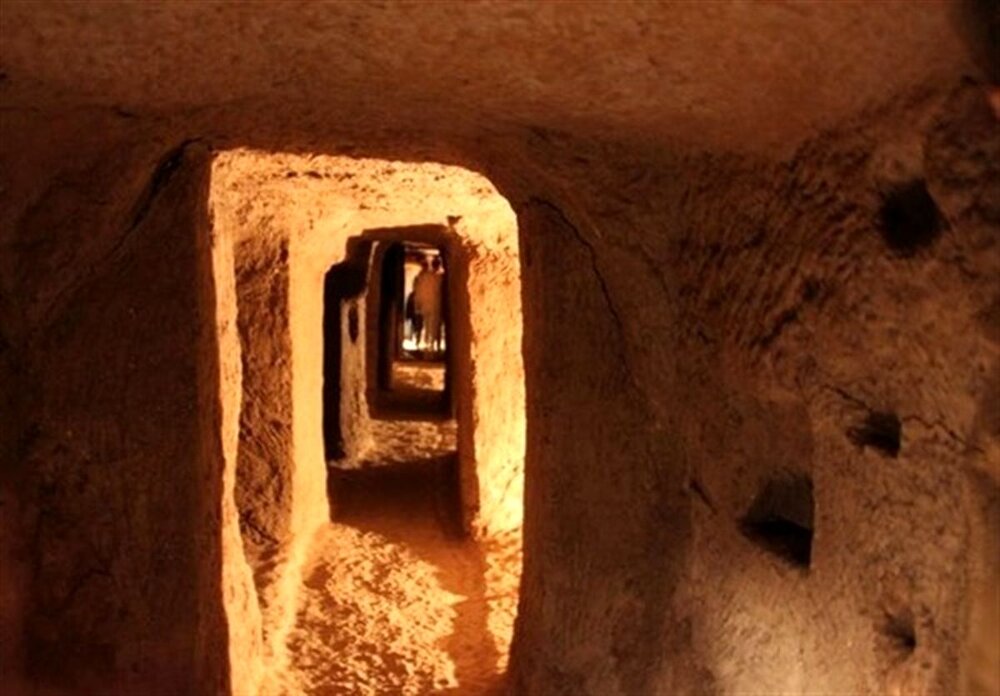Ancient underground city in Yazd to open doors to visitors

TEHRAN –An underground city in the historical core of Abarkuh, central Yazd province, will open its doors to the public in the near future, Abarkuh’s tourism chief has said.
The underground city, which includes wells, water storage basins, canals, food storage chambers, living rooms, platforms, and water channels, was discovered last year and will soon be opened to the public, Javad Adel explained on Thursday.
There are currently plans to unveil this unique complex in the near future, which connects a number of historical Abarkuh houses through underground routes, the official added.
Surveys and studies are still underway to shed light on the historical background of the underground city, he mentioned.
The underground city has been inscribed on the national heritage list, he noted.
Iran is a haven for ancient troglodytic architecture which is somewhat forgotten, though they are filled with life and creativity. The northwest Kandovan village is one of the most famous examples of troglodytic architecture in the country; its ice-cream cone-shaped homes resemble that of Turkey’s Cappadocia.
In October 2018, the country hosted the 3rd International Troglodytic Architecture Conference in which tens of experts, researchers, and academia discussed troglodyte-associated architecture, culture and technology.
In July 2017, the historical structure of the city of Yazd was named a UNESCO World Heritage. Wedged between the northern Dasht-e Kavir and the southern Dasht-e Lut on a flat plain, the oasis city enjoys a very harmonious public-religious architecture that dates from different eras.
Yazd is usually referred to as a delightful place to stay, or a “don't miss” destination by almost all of its visitors. It teems with mud-brick houses that are equipped with innovative badgirs (wind catchers), atmospheric alleyways, and many Islamic and Iranian monuments that shape its eye-catching city landscape.
It is a living testimony to the intelligent use of limited available resources in the desert for survival. Water is brought to the city by the qanat system. Each district of the city is built on a qanat and has a communal center.
The use of earth in buildings includes walls and roofs through the construction of vaults and domes. Houses are built with courtyards below ground level, serving underground areas. Wind catchers, courtyards, and thick earthen walls create a pleasant microclimate.
Partially covered alleyways, together with streets, public squares, and courtyards, contribute to a pleasant urban quality. The city escaped the modernization trends that destroyed many traditional earthen cities.
It survives today with its traditional districts, the qanat system, traditional houses, bazaars, hammams, water cisterns, mosques, synagogues, Zoroastrian temples, and the historic garden of Dolat-Abad. The city enjoys the peaceful coexistence of three religions: Islam, Judaism, and Zoroastrianism.
ABU/AM
Leave a Comment